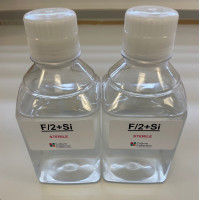(Bold text = submission by CCAP staff or collaborators)
Note: for strains where we have DNA barcodes we can be reasonably confident of identity, however for those not yet sequenced we rely on morphology
and the original identification, usually made by the depositor. Although CCAP makes every effort to ensure the correct taxonomic identity of strains, we cannot guarantee
that a strain is correctly identified at the species, genus or class levels. On this basis users are responsible for confirming the identity of the strain(s) they receive
from us on arrival before starting experiments.
For strain taxonomy we generally use AlgaeBase for algae and
Adl et al. (2019) for protists.
| Attributes | |
| Isolator | Campbell (2006) |
| Collection Site | Porcupine Abyssal Plain, North Atlantic |
| Notes | Isolation: plating on agar; 18S rDNA sequencing gave best hits as Navicula sp. and Halamphora sp., as light microscopy is not enough to identify between these and given that the taxonomy of pennate diatoms is under revision, the original depositor's designation was kept. SEM images provided by Bondoc-Naumovitz in March 2023 show this is not a Navicula but are not clear as to whether the strain is Halamphora or Amphora. As the sequence blast results are mostly Halamphora we have named the strain as such. |
| Axenicity Status | Bacteria present |
| Area | Europe |
| Country | UK |
| Environment | Marine |
| GMO | No |
| Group | Diatom |
| In Scope of Nagoya Protocol | No |
| ABS Note | Collected pre Nagoya Protocol from a region that is out of scope of the regulation (High Seas) |
| Collection Date | 01/07/2006 |
| Original Designation | PAP Navicula |
| Pathogen | Not pathogenic: Hazard Class 1 |
| Strain Maintenance Sheet | SM_MarineDiatoms15_20.pdf |
| Toxin Producer | Not Toxic / No Data |
| Type Culture | No |
| Taxonomy WoRMS ID | 574064 |
| Formerly Listed in CCAP as | Navicula sp. |
Related Products
CCAP MAF2S-C
f/2+Si Medium
CONCENTRATED STOCKS
Non-sterile concentrated stocks to make up 5 litres of f/2+Si medium. f/2+Si medium is used for cul
CCAP MAF2S-P
f/2+Si Medium
1 LITRE PREMADE
1 litre of sterile, ready to use, f/2+Si medium. f/2+Si medium is used for culturing marine diatoms







